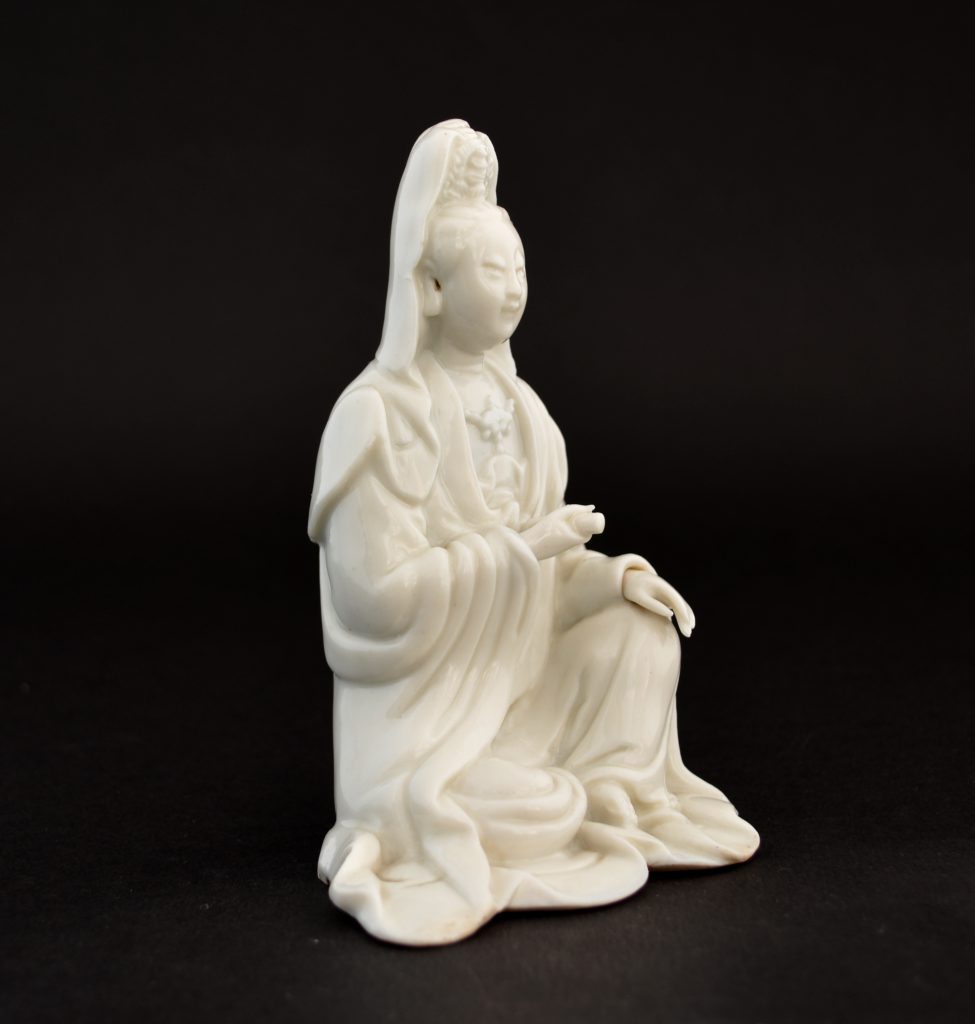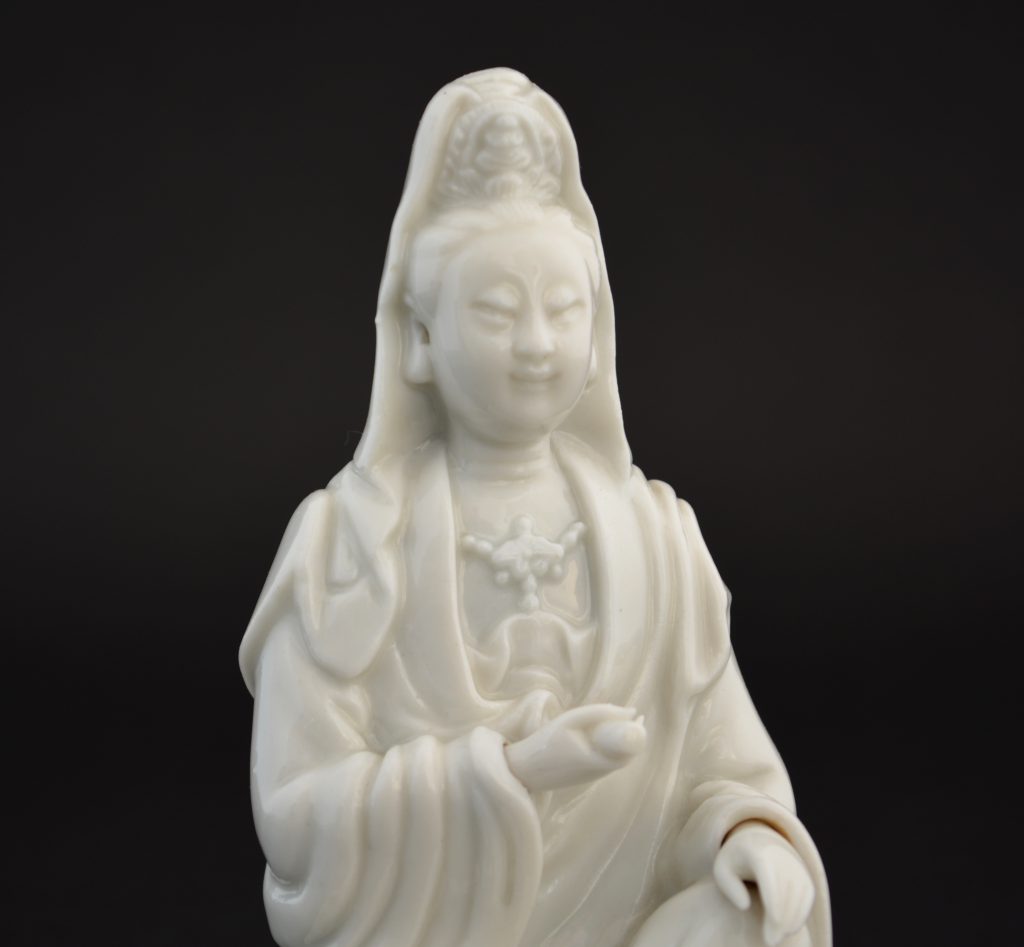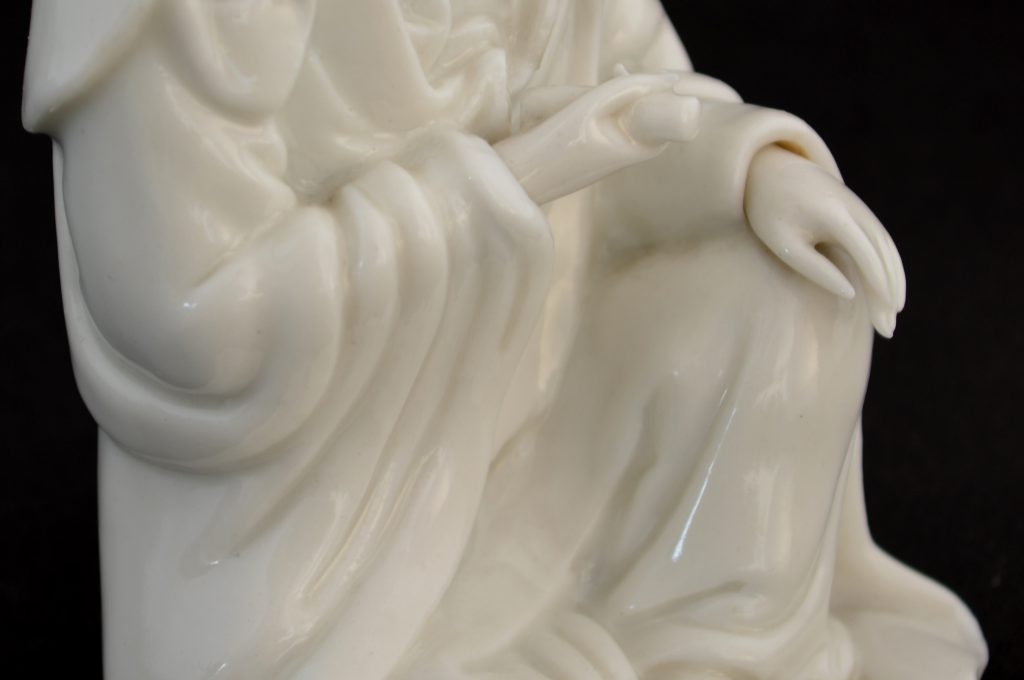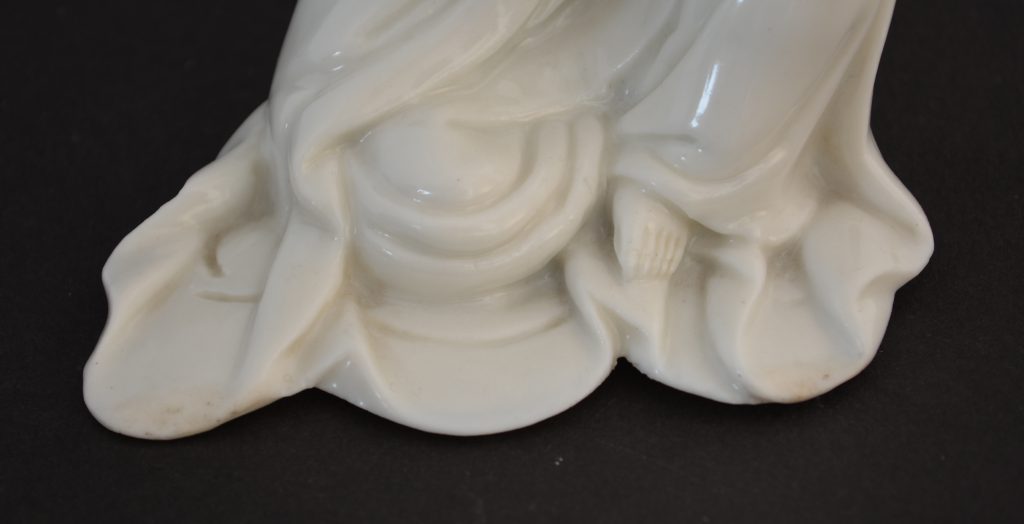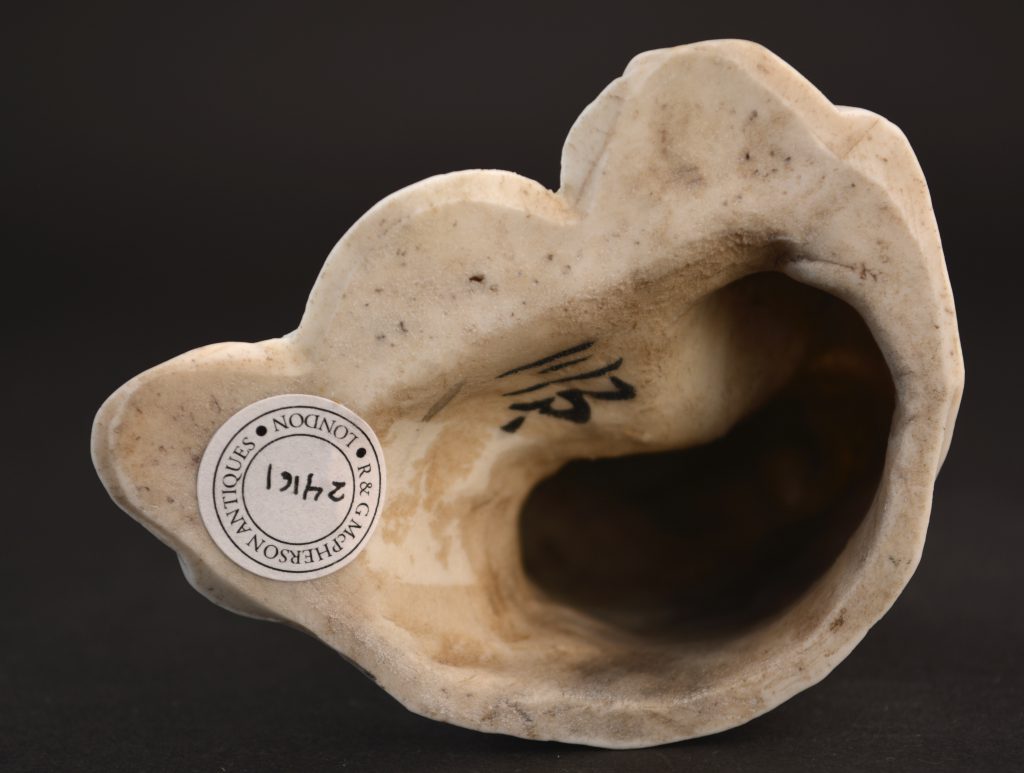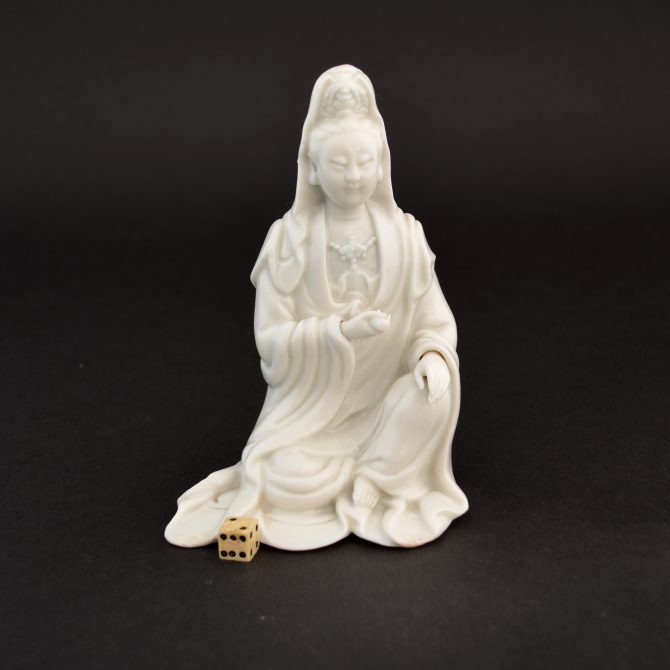
KANGXI 1662 – 1722 Blanc de Chine Porcelain
A Kangxi Blanc de Chine Model of Guanyin in Rajalalitasana of Royal Ease, Dehua Kilns, Fujian Province c.1690.
The modelling of this figure is close to that of Guanyins recovered from the Vung Tau cargo.
SOLD
- Condition
- The front edge of Guanyin's robe has two shallow polished chips c.12 x 4 mm and 8 x 2 mm.
- Size
- Height : 13 cm (4 3/4 inches)
- Provenance
- For a Kangxi Blanc de Chine Porcelain model of Guanyin and a rare bronze glazed version see our `Sold Items` 19633. For another version of this model see : Blanc de Chine (Introduction by John Ayres, S.Marchant & Son 2006. ISBN 0-9554009-0-2) page 54, plate 32.
- Stock number
- 24161
Information
Guanyin :
Figures of Guanyin are some of the most commonly encountered images in Chinese figurative art. Guanyin was the Goddess of mercy. Her origins stem from Tibetan Buddhism, she was originally the patron saint of Tibetan Buddhism `Avalokitesvara`. Guanyin is actually the shorter form of the name Guan shi yin, which means “one who observes the voices of the world.” True to her name, Guanyin listens to and understands the worries that plague man`s existence. Because of her mercy and generosity, Guanyin is the most-loved of China`s divinities, the one people turn to for assistance in their everyday lives. Guanyin is specially venerated by those who are hoping to have children or those who are about to set out for sea. Guanyin has been said to have some of the same qualities as the Virgin Mary of Catholic theology, like the Virgin Mary she is sometimes portrayed holding a child in her arms, indeed she was associated with fecundity and given the title `Giver of Sons`. Guanyin is usually portrayed wearing a white cape. In her right hand. On her head is a crown in the style of the Amitabha-buddha, she is normally shown meditating in a seated position. While the worship of Guanyin can be traced back historically to India, she is the star of countless legends and folk tales in China. Guanyin`s home on earth was the Putuo mountains, located on an island on China`s eastern coast to the south of Shanghai. In China, Putuo-shan is one of the most sacred places in Buddhism and the temple dedicated to Guanyin on the mountain is one of the most important pilgrimage site for Buddhists and non-Buddhists alike. Guanyin`s birth is celebrated on the 19th day of February, and her enlightenment is celebrated on the 19th of September. On those days, the pilgrims flock to Putuo mountain.
Blanc de Chine Figures of Guanyin :
Figures of Guanyin are by far the most common of all Blanc de Chine figures and indeed one of the most common images in Chinese figurative art. Guanyin was the Goddess of mercy, She was especially revered in the area where this figurWe was produced ; Dehua in Fujian Province. But her origins stem from Tibetan Buddhism, she was originally the patron saint of Tibetan Buddhism `Avalokitesvara`. Blanc de chine figures like the present example were constructed of separate pieces put together, this was a standard technique at the Blanc de Chine kilns in Dehua, it explains the huge variation of seemingly similar objects produced at the kilns. Figures from the Ming dynasty show a far greater degree of hand-modelling, with folds of material, the face, as well as fingers cut by hand. The potting tends to be thicker too, the interior space often shows cutting marks where the excess leather-hard clay was removed. The models of Guanyin from the Kangxi period (1662-1722) appear much more obviously mould-made, the modelling is normally more shallow with less definition and less hand-tooling. The interior wall often shows numerous small finger marks where the potter has pushed the clay into the mould. These figures, especially the taller ones frequently have ridges of porcelain supporting the interior moulded walls, they are pinched to form a ridge which is triangular in cross-section.
